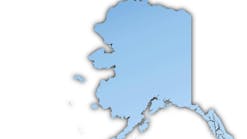Mamadou Zanguina
Ministry of Mines & Energy
Niamey, Niger
Alain Bruneton Robert Gonnard
Beicip-Franlab
Rueil-Malmaison, France
The Niger government is offering a new acreage to the international oil industry. This acreage belongs to the East Niger basin, which comprises the Kafra, Grein, Bilma, Tenere, Termit, and N'Gel Edji grabens.
The East Niger basin is close to Chad, where large oil reserves have been announced and are likely to be developed soon. This decision, if confirmed, will appear as a major step for the economy of Central Africa and strongly influence the petroleum strategy of neighboring countries such as Niger.
Geological framework
Recent papers have shown the major geological features of the rift basins in Central and West Africa.1-3 These rifts are related to major fracture systems running from the Benue trough in Nigeria to East Niger grabens in the north and Chad and Sudan grabens in the east (Fig. 1 [302929 bytes]).
They show preferential trends such as northwest-southeast and east-northeast/west-southwest orientations and were generated through the old Gondwana blocks during the initiation of the opening of the South Atlantic Ocean. Most of these fractures occurred in sub-meridian mobile corridors generally inherited from previous tectonic systems (Pan African and older) and re-activated under successive tensional or transtensional forces. A complex structural history followed the onset of the first rift phase and was very similar in Sudan, Chad, and Niger. It includes the main following stages:
- Rift 1
In Niger, few wells have penetrated the corresponding lithostratigraphic section. It is attributed to Neocomian to Albian and has a fluvial or lacustrine facies. The seismic data (Fig. 2 [66271 bytes]) show large half grabens limited by domino-like faults.
The infill sequence terminates upward by a strong unconformity. In some basins such as Bilma, Tenere, and Grein the thickness of sediments attributed to Lower Cretaceous reaches 4,000-5,000 m.
The seismic data show that this sequence may possibly be divided in two sub-sequences with a slight unconformity in between.
- Rift 2
This phase started in Niger with a shallow marine transgressive unit dated Cenomanian and terminated in Paleocene times. Huge listric faulting occurred on the borders of the rift. Three sequences can be distinguished. The lowest one corresponds to a shallow marine interval dated Cenomanian to Coniacian. A well pronounced unconformity is found at the top. In some places, clear reverse faulting (Fig. 3 [74166 bytes]) witnesses to a compressive tectonic phase between Coniacian and Santonian. Folded structures may be found in a few places.
This lowest unit is overlain by a Santonian to Early Maastrichtian shallow marine sequence corresponding to the end of the rift activity.
Above this rift phase, a sag phase developed during Maastrichtian to Paleocene and a thick blanket of alluvial sands was deposited. A slight unconformity is found at the base of this sequence but no tectonic activity was recorded during this period. We can only assume that a general uplift of the African cratonic areas occurred (Ar mountain, for instance) and was followed by a strong erosional activity. The total thickness of the rift 2 sequence is probably very great in Tenere and Agadem basins (4,000-5,000 m as a minimum).
- Rift 3
Following the Maastrichtian sag phase, a new rift activity started and lasted from Eocene to Early Oligocene. This Tertiary rift sequence is well developed in Niger as in the Sudan basin, whereas it seems practically absent in South Chad basin. It is obviously correlative with the rifting of Suez and Red Sea areas. The rift 3 unit is represented by alternating lacustrine and fluvial deposits. The Late Oligocene and Miocene lacustrine or fluvial deposits correspond to the last sag phase and can reach 1,000 m or more in the northern graben of Kafra.
Petroleum potential
Significant oil accumulations have been discovered in the Chad and Sudan grabens in a structural context and basin history similar to those of the East Niger grabens.
In the rift basins of interior Sudan, two large hydrocarbon accumulations have been discovered with estimated recoverable reserves of 250-300 million bbl of oil.4 Several smaller discoveries have been made in nine areas. Early syn-rift, lacustrine, oil-prone, thick and rich source rocks have generated significant volumes of hydrocarbons that have accumulated in Cretaceous alluvial and fluvial sand reservoirs.
A large variety of structural traps result from the complex history (three periods of extension and rifting) of the basin: they are rotated fault blocks, drape folds, rollover anticlines, and reverse drag folds.
In Chad, oil and gas discoveries have been made in the Termit, Doba, and Doseo basins.2 In the Doba basin, hydrocarbons are reservoired in Early Cretaceous fluvial sandstones (sourced and sealed by associated lacustrine shales) and in Late Cretaceous sands (also sourced by the Early Cretaceous lacustrine shales). Structures of the Doba basin are represented by rotated fault blocks, transpressional anticlines, and rollover structures. In the Doseo basin, reservoirs are Early Cretaceous fluvial, fluvio-deltaic and turbiditic sandstones, sources are thick interbedded lacustrine shales, traps are transtensional or transpressional flower structures and drag folds. The Termit extends through the Niger-Chad border.
In East Niger grabens, oil and gas discoveries have been made on four structures and oil and gas shows have been recorded in most of the wells drilled in the area.
Reservoir rocks are located in Eocene fluvial sands with good to excellent characteristics, in Maastrichtian fluvial sands with also excellent characteristics, and in Early Cretaceous sandstones. Source rocks are identified in marine Late Cretaceous shales and in Oligocene lacustrine shales and suspected in Early Cretaceous lacustrine sequences. Large structures are still undrilled including rotated fault blocks, reverse drag folds, and transtensional or transpressional flower structures (Figs. 3 [74166 bytes] and 4 [75756 bytes]). In Niger, three petroleum systems can be expected (Early Cretaceous and older, Cenomanian-Paleocene, Eocene to Recent) providing a large spectrum of petroleum opportunities.
References
1. Genik, G.J., Regional framework, structural and petroleum aspects of rift basins in Niger, Chad, and the Central African Republic, Tectonophysics, Vol. 213, No. 1-2, 1992, pp. 169-185.
2. Genik, G.J., Petroleum geology of Cretaceous-Tertiary rift basins in Niger, Chad, and Central African Republic, AAPG Bull., Vol. 77, No. 8, 1993, pp. 1405-1434.
3. Mc Hargue, T.R., Heidrick, T.L., and Livingstone, J.E., Tectonostratigraphic development of the Interior Sudan rifts, Central Africa, Tectonophysics, Vol. 213, No 1-2, 1992, pp. 187-202.
4. Schull, T.J., Rift basins of Interior Sudan: Petroleum exploration and discovery, AAPG Bull., Vol. 72, No. 10, 1988, pp. 1,128-42.
Bruneton, A., Niger, with new oil legislation, offers little-drilled acreage for exploration, OGJ, Sept. 16, 1991, p. 102.
Guiraud, M., Late Jurassic rifting-Early Cretaceous rifting and Late Cretaceous transpressional inversion in the Upper Benue basin (NE Nigeria), Elf Aquitaine Bull., Vol. 17, No. 2, 1993.
The Authors
Mamadou Zanguina is director of energy of the Ministry of Mines, Industry and Technology, especially in charge of the petroleum exploration sector in Niger. He has been a geophysicist since 1981 and has participated in seismic interpretation on the Agadem basin with Elf Aquitaine. His experience has improved in the frame of a project on the petroleum potential study of Niger with Beicip-Franlab, which has been carried out during 1989-96.
Alain Bruneton has been in charge of the geophysical department of Beicip-Franlab since 1982. He is currently involved in geophysical assistance in basin evaluations and oil and gas field studies to national or private oil companies around the world. He joined Beicip-Franlab in 1974 after graduating from the petroleum school of the French Institute of Petroleum in 1971.
Robert Gonnard is senior petroleum geologist and project manager of Beicip-Franlab. After graduating from the petroleum school of the French Institute of Petroleum in 1966, he joined this consulting firm in 1967. He has been mainly involved in petroleum evaluation of basins (geological/geophysical interpretation, modeling, prospect appraisal, exploration strategy) and multidisciplinary team management of exploration and production in Africa, Far East, South America, and C.I.S. Copyright 1996 Oil & Gas Journal. All Rights Reserved.

